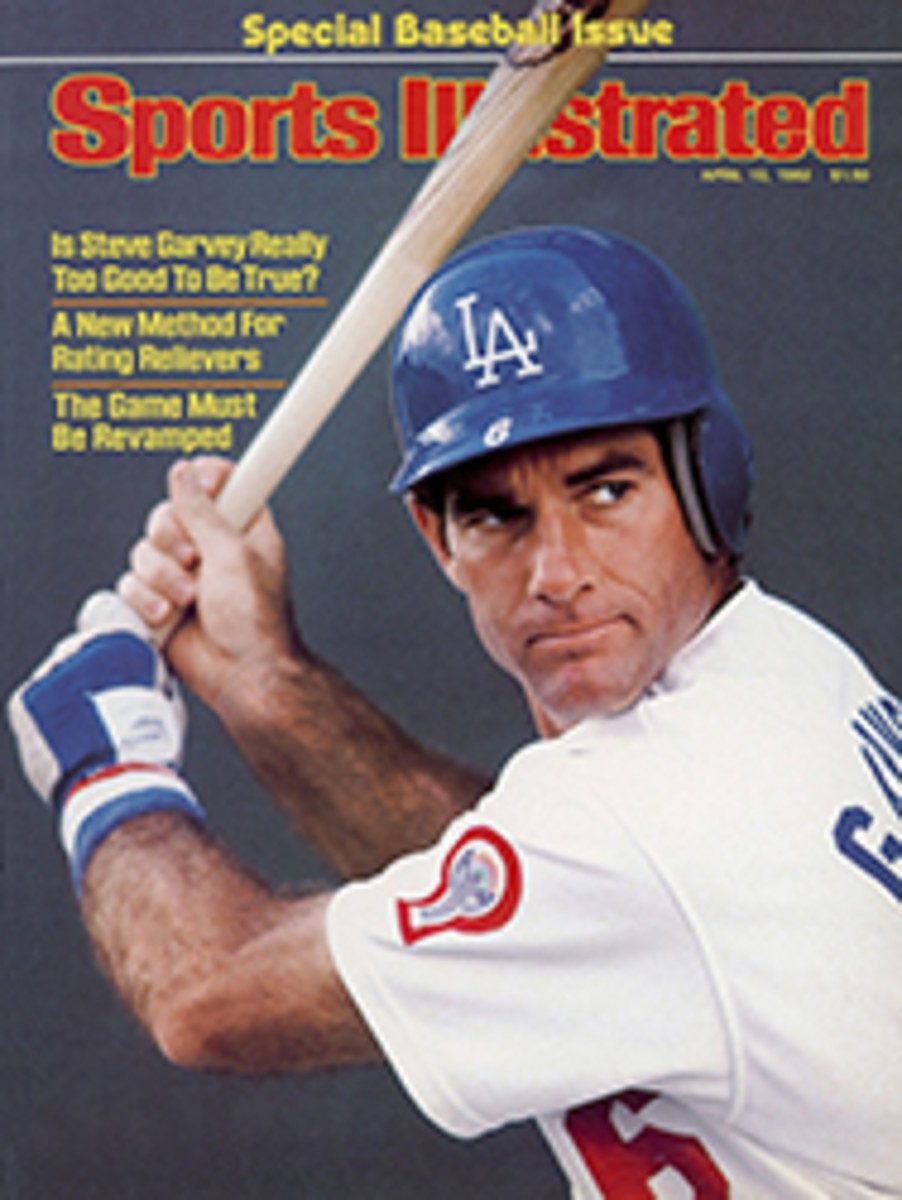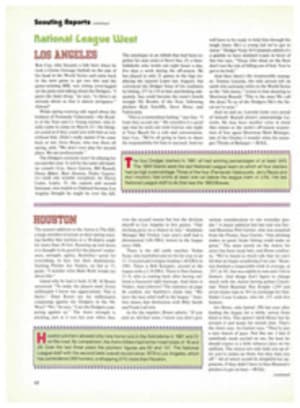
The Way To Win A Lot With A Little
In the unreal patch of California desert called Rancho Mirage, they name the streets after stand-up comics, clear blue lakes rise out of the hot sands like Old Testament miracles, and the son of a Philadelphia gambler entertains kings and presidents behind a mile-long oleander hedge. One not-so-improbable aspect of Rancho Mirage is the Nabisco (née Colgate) Dinah Shore Invitational, and Sally Little gave even that event a tinge of unreality on Sunday when she shot an astounding 64, the best round of her life, to beat Hollis Stacy by three strokes.
Little's irons kept her close to the pins all day and her putter did the rest. Rarely did she have to make a putt longer than 10 feet, and two were gimmes. She was unmistakably in the zone, or "the ozone," as she put it. "To tell you the truth I didn't know what I was shooting," she said afterward. Indeed, she could do no wrong. Her 76-67-71-64—278 was 10-under on the Mission Hills course.
If Little didn't know what she was shooting, Stacy did. She had carded a 65 on Friday to lead the field by three shots, and added a 71 on Saturday to increase her lead to four. But on Sunday she couldn't buy a birdie. As she scored par after par she could only watch Little, playing one group ahead, eating away at her lead until finally, at the 12th, Stacy was in second place to stay. Later someone asked when it was she became aware of Little's extraordinary round, and the irrepressible Stacy said, "I kept seeing her ass all day, bending over to pick her bailout of the hole."
Both players would have been good bets going in. Stacy had already won two tournaments this year and seemed to have a new determination, as if she had decided to make better use of her considerable talent. A friend said of Stacy, "When Lopez was starting to dominate, Hollis won two U.S. Opens back to back, but never got any acclaim. She was put out by it. Now I think she realizes that Lopez is just one of the field and that she too can be a star."
Little has been improving markedly over the last three years. A month ago she won the Olympia Gold Classic near Los Angeles and she had three other finishes in the top 10 coming into the Dinah Shore. She also had a special feeling for the tournament. "I'm so motivated to play here that I want to practice and get ready," she said. "I don't feel that way every week."
The other great round of Sunday belonged to Hall of Famer Sandra Haynie, winner of the 1974 U.S. Open, two LPGA championships and 37 other tournaments. Haynie's 65 brought her from seven shots back into a tie for second with Stacy at 281. After a four-year retirement, Haynie returned to the tour last year at the age of 37 and had the most lucrative season of her 21-year career, winning $94,124.
The opening day at Rancho Mirage wasn't auspicious. Drenching rains driven horizontal by cold gusts up to 45 mph swept across the desert, blowing umbrellas inside out and scores sky high. Two young survivors, Kyle O'Brien and Lori Garbacz (pronounced gar-buh-cee), both 23, shot 71s and lived to tell about it. "Miserable," is what they said. Theirs were the only sub-par rounds of the day.
Friday was as glorious as Thursday had been rotten. Stacy soared into the lead with her 65, three strokes ahead of Pat Bradley, six ahead of JoAnne Carner and seven in front of Jan Stephenson, newly married to her business manager, Larry Kolb. Nancy Lopez-Melton, after an opening 77, returned with a 71, leaving her 10 strokes back, too far for most folks, but not necessarily for her.
Not much changed Saturday, except that Bradley faltered and Stephenson had a 68, tying her with Carner, four behind. Stacy birdied the last two holes for a 71. Still lurking six strokes back after a 67 was Lopez-Melton, but the gap looked unbridgeable now. "It's a lot," she said that evening, "but you never know."
The joyful competitive intensity of a Little in her winning trance, or a Lopez-Melton, is typical of the spirit in which the pros approach the Dinah Shore each year. The tournament is without equal on their calendar. The U.S. Women's Open carries greater historic weight, the LPGA Championship is older, and the Peter Jackson Classic has been designated "major," but the Dinah Shore is the players' favorite. It is their Masters without portfolio. They wouldn't consider skipping it, and they would kill to win it. They lie awake in the dark thinking about it. Stephenson claims she cried herself sick the year (1974) she had to sit it out. Last week, when Carner was asked what was special about the tournament for her, she grinned and said, "Money." But Carner would give an eyetooth and her Honda Trail 90 to win it, and not for its $45,000 first prize alone.
The tournament was created in 1972 by Colgate's then chairman, David R. Foster, to convince the sporting press and public and, coincidentally, the players themselves, that the LPGA really mattered. Foster put up the then astronomical purse of $100,000, prodded television coverage out of the Hughes network, and each year hosted a lavish week-long party in Palm Springs for the players and his corporate guests. When Foster was unseated in 1979, however, Colgate's commitment withered and died, leaving the fate of the Dinah Shore after 1981 up in the air.
Enter Nabisco Brands, Inc., created last July by the merger of Nabisco, Inc. and Standard Brands. As it happened, F. Ross Johnson and Martin F.C. Emmett of Standard Brands, which agreed to sponsor the event one month before the merger, were both golfers. "We were delighted to get it," says Johnson, who has since become president and chief operating officer of the new company. "It was a unique opportunity to take on an established tournament. We wouldn't have started our own."
"We had ideas about what we wanted to do," says Emmett, now an executive vice-president. "We wanted to do a first-class job, nothing halfway."
In pursuit of excellence Nabisco Brands spent between $5 and $6 million on the tournament and dozens of related activities. It distributed, for instance, 700 million supermarket coupons and bought a Sunday supplement advertising insert that reached 34 million homes, all calling attention to the Nabisco-Dinah Shore Invitational Sweepstakes.
Watching all the commercial activity from the sidelines last week, with a slightly amused look, was Ray Volpe, the LPGA's commissioner for the last seven years. Volpe, who this month is moving on to possibly greener pastures in independent TV programming, took over the LPGA job in 1975 when the organization was on the brink of bankruptcy, and nursed it back to financial health. Combining his own marketing savvy, learned in the National Hockey League, with a fortuitous surge of public interest in women's sports and the long-awaited emergence of a genuine superstar in Nancy Lopez, Volpe was able to increase the tour's total prize money from $1.2 million in 1975 to $6.4 million this year and to raise the average purse from $52,787 to $168,000. He also set up a retirement plan for his players and earlier this year negotiated the first bonus-point pool in golf, the Mazda-LPGA Series, worth $300,000 a year for the next three years. Under the Mazda plan, the leader at the end of the year in points based on performance will win a $125,000 bonus. Second place will receive $60,000, and so on down to 60th place.
Taking over for Volpe will be John Laupheimer, who was previously executive director for administration of the USGA. Laupheimer has an uncommon asset, a source of insight into the women's game that may be helpful in his dealings with the players. His wife, England's Mary Everard, has had a distinguished amateur golf career, playing on four Curtis Cup and three World Amateur Cup teams between 1968 and 1978.
Laupheimer will oversee the tour from the LPGA's new offices near Houston. The LPGA's own golf course, the Sweetwater Country Club, will be built there, along with a $12 million clubhouse, a headquarters building and a Hall of Fame.
In 1950 11 women professionals named themselves the Ladies' Professional Golf Association and created a golf tour. That first year there were nine tournaments. Patty Berg won three of them, Babe Zaharias won all the rest. No record remains of the purse total in 1950, but Zaharias, the leading money winner, earned some $14,800.
Last week at Mission Hills, Amy Alcott and Kathy Whitworth, who finished tied for fourth, won $13,500 apiece. Now that's really unreal.
PHOTO
BILL EPPRIDGE
Little had eight birdies and no bogeys as she equaled the tournament course record.

